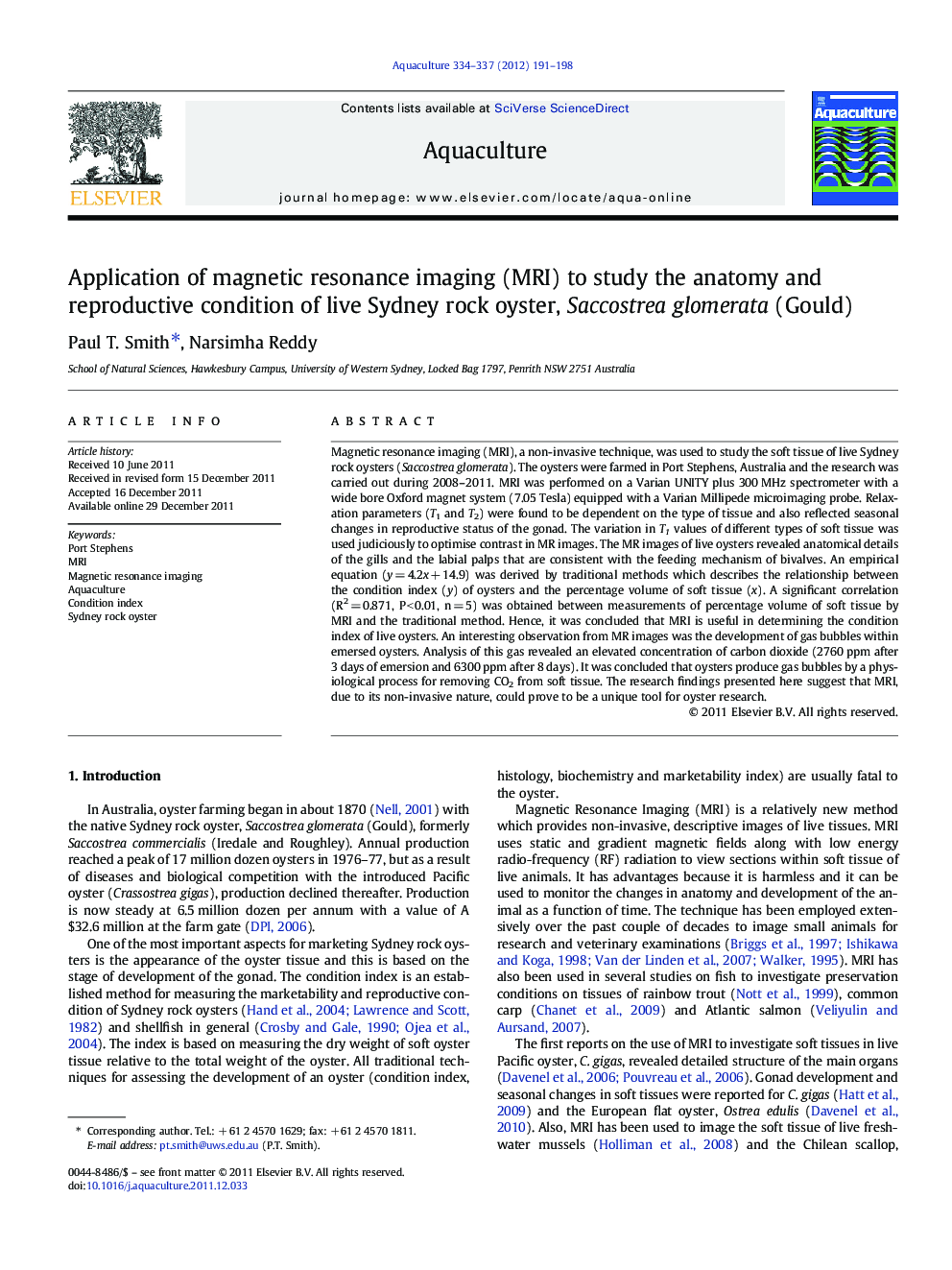| کد مقاله | کد نشریه | سال انتشار | مقاله انگلیسی | نسخه تمام متن |
|---|---|---|---|---|
| 2422717 | 1552894 | 2012 | 8 صفحه PDF | دانلود رایگان |

Magnetic resonance imaging (MRI), a non-invasive technique, was used to study the soft tissue of live Sydney rock oysters (Saccostrea glomerata). The oysters were farmed in Port Stephens, Australia and the research was carried out during 2008–2011. MRI was performed on a Varian UNITY plus 300 MHz spectrometer with a wide bore Oxford magnet system (7.05 Tesla) equipped with a Varian Millipede microimaging probe. Relaxation parameters (T1 and T2) were found to be dependent on the type of tissue and also reflected seasonal changes in reproductive status of the gonad. The variation in T1 values of different types of soft tissue was used judiciously to optimise contrast in MR images. The MR images of live oysters revealed anatomical details of the gills and the labial palps that are consistent with the feeding mechanism of bivalves. An empirical equation (y = 4.2x + 14.9) was derived by traditional methods which describes the relationship between the condition index (y) of oysters and the percentage volume of soft tissue (x). A significant correlation (R2 = 0.871, P < 0.01, n = 5) was obtained between measurements of percentage volume of soft tissue by MRI and the traditional method. Hence, it was concluded that MRI is useful in determining the condition index of live oysters. An interesting observation from MR images was the development of gas bubbles within emersed oysters. Analysis of this gas revealed an elevated concentration of carbon dioxide (2760 ppm after 3 days of emersion and 6300 ppm after 8 days). It was concluded that oysters produce gas bubbles by a physiological process for removing CO2 from soft tissue. The research findings presented here suggest that MRI, due to its non-invasive nature, could prove to be a unique tool for oyster research.
► MRI was found to be a non-invasive technique for viewing live Sydney rock oysters.
► MRI revealed details consistent with the oyster’s anatomy and feeding mechanism.
► A relationship was derived for condition index and percentage volume of soft tissue.
► Gas bubbles were observed in emersed oysters and the gas had elevated levels of CO2.
► Oysters produce gas in a physiological process for removing CO2 from soft tissue.
Journal: Aquaculture - Volumes 334–337, 7 March 2012, Pages 191–198